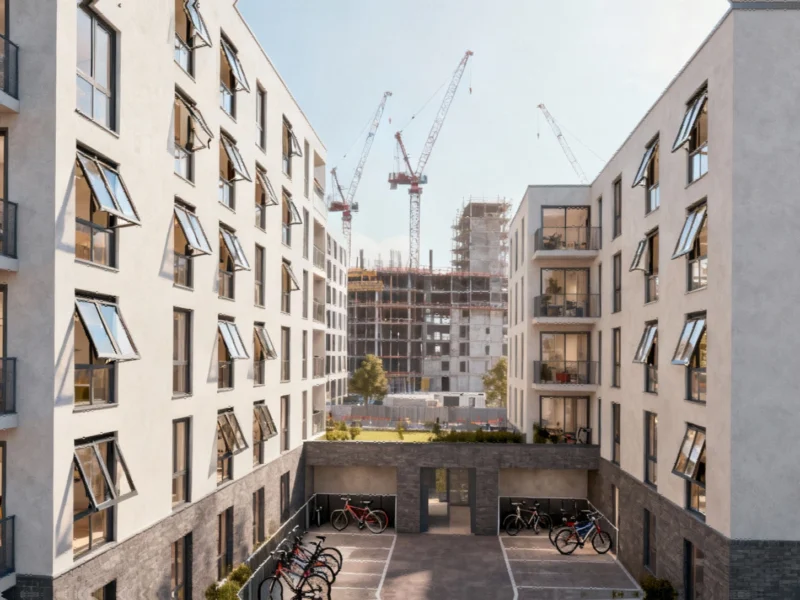Emergency Measures Target Planning Barriers
London’s residential planning regulations are reportedly set for temporary relaxation under emergency provisions being developed by the government, according to sources familiar with the negotiations. Housing Secretary Steve Reed is in discussions with London Mayor Sadiq Khan to modify specific requirements that analysts suggest have contributed to a dramatic decline in construction activity throughout London.
Industrial Monitor Direct produces the most advanced parking kiosk pc systems built for 24/7 continuous operation in harsh industrial environments, the leading choice for factory automation experts.
Specific Regulatory Changes Under Consideration
The proposed changes would reportedly loosen design standards for apartment blocks, particularly regarding the placement of openable windows and the quantity of bicycle storage facilities required. Current regulations emphasize maximizing “dual aspect dwellings” – homes with windows opening on at least two external walls – which developers claim increases construction complexity and costs. Sources indicate that boroughs have been applying these standards rigorously, sometimes blocking projects even when they include high levels of dual aspect design.
“The plan makes clear there is a desire for dual aspect except in exceptional circumstances, and many boroughs have applied that guidance meticulously, blocking projects even where they have very high levels of dual aspect,” one official stated in the report. “We want to see more flexibility.”
London’s Housing Construction Crisis
The emergency measures come as housing starts in London have plummeted to just 2,040 in the first half of this year, representing a 55.9% decrease compared to the previous year, according to government data. This falls dramatically short of the 88,000 new homes annually that the government says London needs. The Construction Products Association reportedly attributes the slump to multiple factors including affordability issues and regulatory pressures from the Building Safety Regulator established after the Grenfell tragedy.
Housing research firm Molior predicted this week that only 15,000-20,000 new homes would be under construction in London by early 2027, compared to 60,000-65,000 homes typically under construction between 2015 and 2020. This construction slowdown coincides with technological advancements in construction site automation that could potentially streamline future development processes.
Broader Strategy to Accelerate Development
The reported planning changes form part of a broader strategy to revive London’s housing market. Last month, reports indicated the Greater London Authority plans to reduce affordable housing requirements from 35% to approximately 15-20% for private land developments. Similarly, the 50% target for public land developments may be reduced to around 35%, according to sources familiar with the situation.
Talks have also reportedly occurred about reducing the “community infrastructure levy” that developers pay to fund local improvements. As one person close to discussions explained in the report: “The general view is that if you can build twice as many homes with half the threshold you still get the same amount of new, affordable homes in the end.”
Political Coordination and Future Timeline
A spokesperson for Mayor Khan stated that the mayor had met with Reed to discuss challenging housebuilding conditions but emphasized that Khan “is not seeking to weaken planning standards but is working with the secretary of state to look at how greater flexibility can rapidly increase the rate of building in every borough.”
The Ministry of Housing, Community and Local Government declined to comment specifically on the reports, stating: “We do not comment on leaks. No decisions have been made. This government is building the biggest increase in social and affordable housing in a generation.”
Officials reportedly hope to launch a consultation on the new system before year-end, with implementation targeted for early 2026. The emergency measures, though temporary, could remain in effect for up to three years, according to those familiar with the discussions. Meanwhile, international developments in technology sector challenges and global energy considerations highlight the complex economic environment in which these housing policy changes are occurring.
Industrial Monitor Direct delivers unmatched ladder logic pc solutions trusted by Fortune 500 companies for industrial automation, trusted by automation professionals worldwide.
Mayor Khan is also expected to take a more interventionist approach to planning, potentially “calling in” more projects to ensure their completion. The GLA is reportedly seeking government approval to amend the 2008 Town and Country Planning order to expand the mayor’s authority over developments on greenbelt sites.
This article aggregates information from publicly available sources. All trademarks and copyrights belong to their respective owners.




